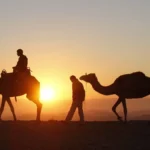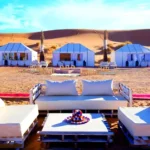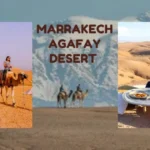Colors stories and traditions:
Morocco in November is ideal for discovering the country. At this time of year, its territory is characterized by magnificent and surprising colors that make the wonderful valleys that you will cross during this trip even more fascinating. This tour is designed for those who want to deepen their knowledge of an area rich in tradition, colors, history, and faces at a slow pace.
From the spiritual capital of Fes to the blue city of Chefchaouen, the play of light and shadow in the Desert, the green of the Atlas Mountains, the red of the buildings to the Red City par excellence, Marrakech.
Fez: getting lost in the medina:
With about a million inhabitants, Fez is Morocco’s second-largest city and boasts the country’s largest medina, certainly its liveliest. Strolling and getting lost in the maze of streets and alleys of its medina is a wonder for the senses. Your sight is treated to countless architectural wonders that are almost thousands of years old, your taste and sense of smell are stimulated by the many souks with their fresh produce, and your hearing is stimulated by the constant clamor and hubbub. Fez and Morocco in general in November is a perfect month to visit quietly without many tourists. It is without a doubt an unforgettable experience!
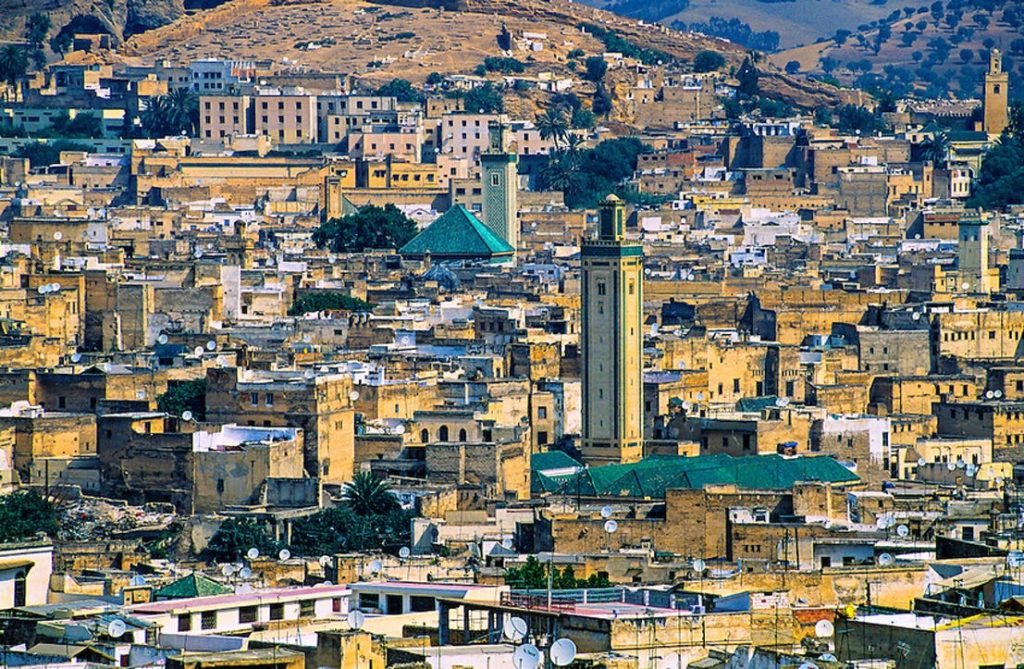
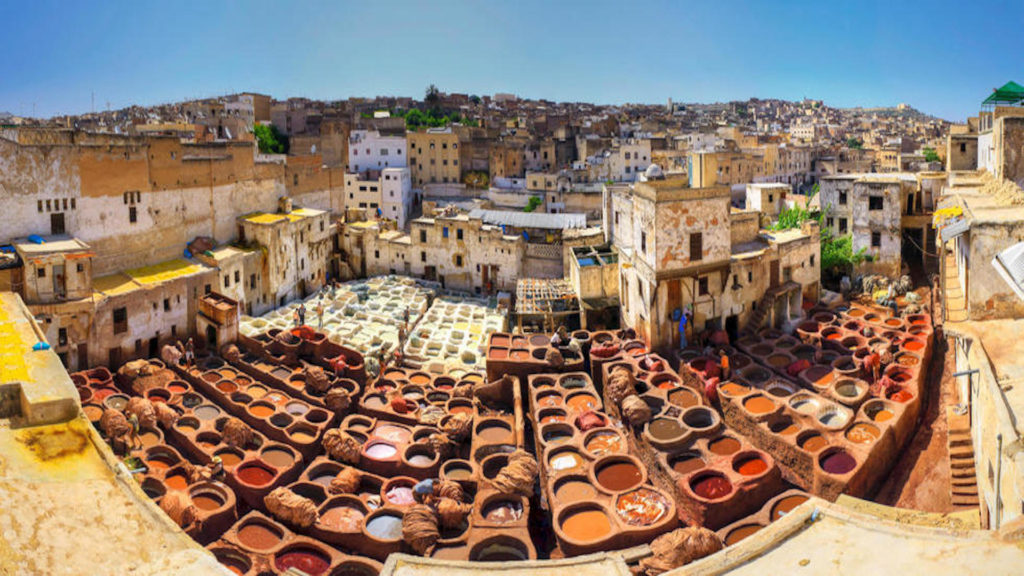
Ifrane: the Switzerland of Morocco:
With its kitschy European architecture, Ifrane is an anomaly in Morocco’s landscape, but the town makes a good base for hiking in the Moroccan Atlas Mountains and is an excellent destination for winter sports.
Nicknamed Little Switzerland, Ifrane was created in the mid-20th century to accommodate European settlers in an environment that would not make them feel too lost. Ifrane looks like a ski resort in the heart of the Alps: chalets with sloping red roofs, well-maintained parks, the ruler-drawn and spotlessly clean roads-an incredible absurdity of the colonial period.
But while travelers seek the disorder of the medinas, Moroccans today seem to appreciate the bewilderment of Ifrane, which has become a popular ski resort throughout the country. The town also offers beautiful summer walks and a pleasantly laid-back atmosphere.

Chefchaouen: the blue city:
Nestled between two mountains, Chefchaouen is a city of blue and white houses. An irresistible charm can be felt in the Outa-el-Hammam square in the cobblestone-paved medina. Sitting on a café terrace, you can enjoy the beautiful view of the great Tarik-Ben-Ziad mosque whose octagonal minaret is inspired by that of Seville’s Torre de Oro. Let yourself be seduced by the charm of this tour of Morocco with Chefchaouen!


Azrou: the Cedar Forest:
Located in the heart of the Middle Atlas massif, Azrou is an ordinary town that is relaxing and off the usual routes, perfect for exploring the surrounding nature.
Located just north of the Middle Atlas massif, Azrou is at the crossroads of roads connecting Meknes, Fès, Khenifra, and Midelt. A mercantile city, Azrou is a pleasant little town but is above all an escape from the usual routes and hustle and bustle of the country’s big cities. Famous for its Berber art and traditional carpets, Azrou is surprisingly overlooked by tourists and makes a good base from which to go exploring the surrounding region: the mountains, where you might be lucky enough to see the Barbary monkey (breccia), or the impressive cedar forest that offers beautiful hikes.

Sahara: Arabic for “desert”:
In dunes and souqs, in Kasbahs and Berber tents. Every place is discovery and amazement: the sound of the wind sitting on the back of a camel, the sweetness of the dates in the market, the more intense orange than ever of the rock, and the dark red of the bricks of the fortresses. The main reason for going to the Moroccan desert is: to contemplate its diverse beauty. The splendor is certainly natural: high dunes change color from sunrise to sunset, and deep gorges and extensive palm groves provide awe. However, splendor is also found in the ancient kasbahs and centuries-old Berber traditions. If you go to Morocco in November you will find fascinating lights and colors, perfect temperatures, and very few people around.
Of the many deserts in the world, the largest is in the Sahara. The name “Sah’ra” is first mentioned by the Arabic writer Ibn-el-Hakem, and it means “emptiness.” Some areas of the Sahara consist entirely of shifting sand dunes, shaped by the raging desert winds. The highest dunes in the world are found in the portion between Algeria and Morocco and reach 465 meters; more than New York’s Empire State Building.

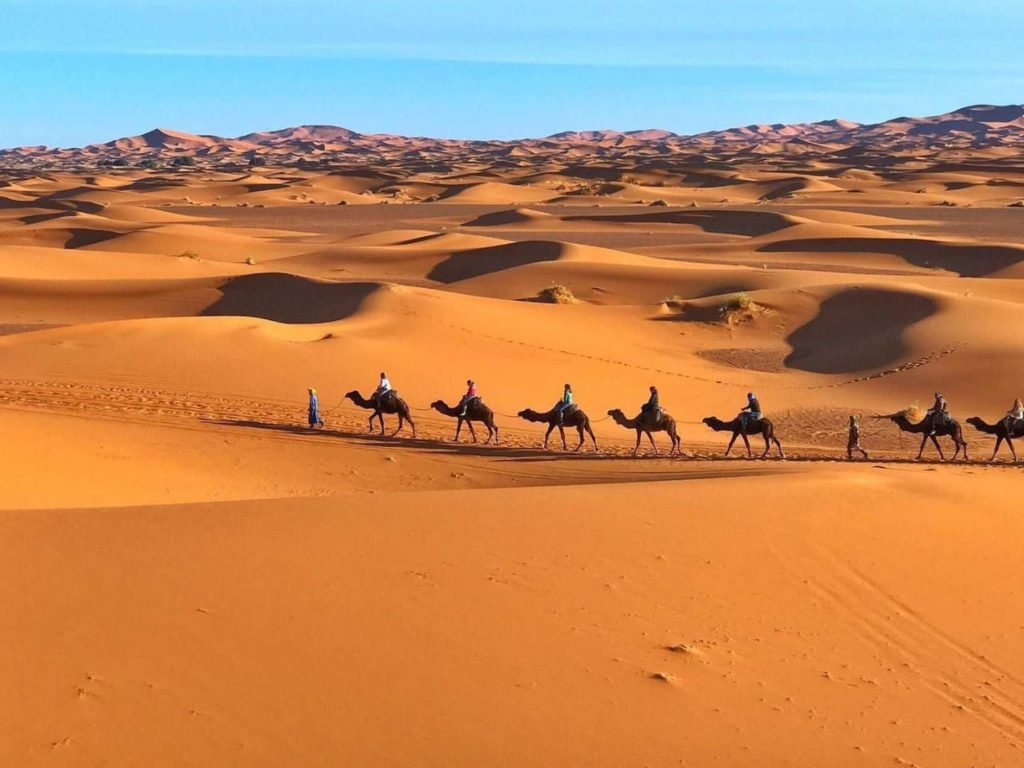
Traveling to Morocco in November:
When we think of Morocco, the first things that come to mind are the crowded, colorful bazaars and their mysterious smell of spices. We also picture its imposing palaces and lush gardens, its imperial cities, or even its expanses of sand stretching across the horizon. But in addition to its richly colored decorations, Morocco is also a country that deserves to be discovered more thoroughly. It is in the heart of the Medina that one feels the beating pulse of the city, and the discovery of the country comes through a gradual immersion in the daily lives of its inhabitants. It is precisely through encounters that Morocco and the Moroccans will gradually open up to you, and let you glimpse through their hospitality-the treasures that enrich their country. From the four royal ramparts of the misty city of Essaouira, through camel rides in the Sahara to the relaxing beaches of Agadir… Morocco in November. The perfect month to visit the country. Whatever your trip, moments of pure wonder are sure to await you!

